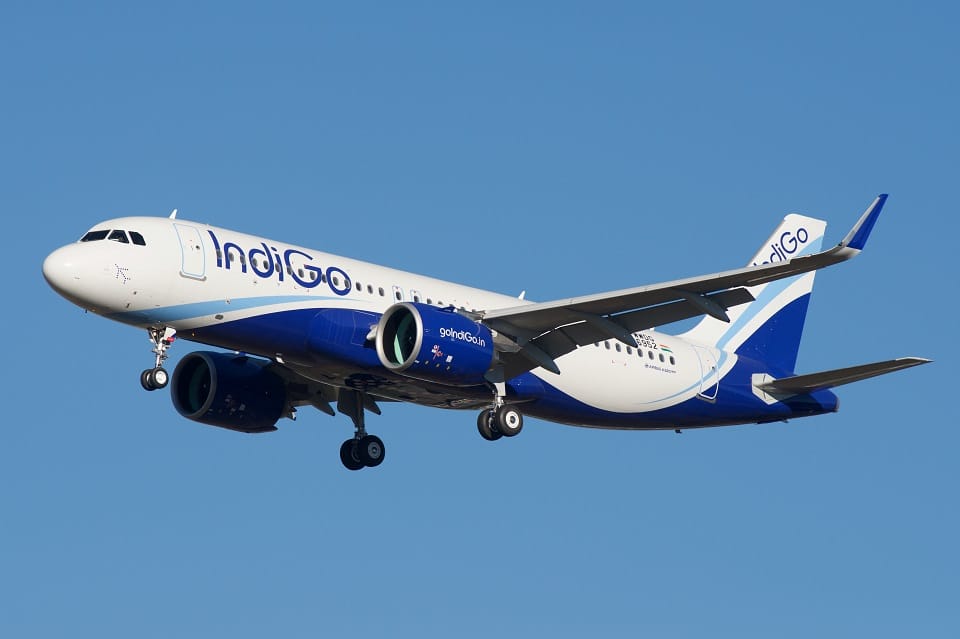Business
Malaysia Airlines And IndiGo Sign MoU To Boost Tourism

Malaysia Airlines and IndiGo, India’s leading airline, announced the signing of a Memorandum of Understanding (MoU) for a codeshare partnership and mutual cooperation agreement.
The agreement will enable both carriers to provide customers with more options and flexibility for seamless travels between Malaysia and India. Through this cooperation, Malaysia Airlines will be able to strengthen its connectivity into India as the marketing carrier on IndiGo operated flights.
while IndiGo customers get to explore more Southeast Asia destinations through Malaysia Airlines’ extensive network. This reciprocal arrangement will allow both carriers to provide seamless connections to their customers, besides enabling them to enjoy an
integrated travel itinerary among other facilities.
Currently, Malaysia Airlines flies 71 times a week to nine major Indian hubs: New Delhi, Mumbai, Bengaluru, Chennai, Hyderabad, Kochi, Ahmedabad, Amritsar, and Trivandrum.
To learn more and to make travel reservations, go to the official Malaysia Airlines website at www.malaysiaairlines.com. Customers who would like to start earning Enrich Points and enjoying member-only benefits are invited to sign up for Malaysia Airlines’ renowned travel and lifestyle loyalty programme, Enrich, at www.enrich.malaysiaairlines.com. Get the Malaysia Airlines app to access the newest deals from anywhere at any time.

Business
Lunar and SAS partner to launch Scandinavia’s first debit card with EuroBonus points

SAS and Lunar, two Scandinavian corporations, have forged a new alliance. Today, they are introducing the first debit card in Scandinavia that lets you earn EuroBonus points.
Users earn EuroBonus points on everyday purchases
On everyday transactions made without using credit, such as grocery store trips, morning coffee, and summertime activities. In this new collaboration, two recognisable Scandinavian businesses combine digital innovation with a strong Scandinavian tradition.
Scandinavians now have access to the first debit card in the country, where users can earn EuroBonus points on everyday purchases, thanks to the combination of Lunar’s cutting-edge and user-friendly banking app and SAS’ well-liked EuroBonus programme.
The new debit card is available to all EuroBonus members as well as Lunar users in Scandinavia. If you are not a EuroBonus member you can easily sign up via flysas.com to unlock a world of benefits and gain access to everything from SAS flights to hotel stays, upgrades and different quality products in the SAS EuroBonus shop. If you are not a Lunar user, you can sign up within minutes through the Lunar app – perhaps while waiting to board your next flight.
New Lunar users receive up to 6,000 welcome points.
The debit card is available both as a physical and a digital card, allowing users to use it whenever and wherever it suits them best. For every 100 DKK spent on the debit card, users earn 8 EuroBonus points. New Lunar users receive 3,000 welcome points, and the first 10,000 users get 6,000 points.
The card can be ordered via Lunar’s banking app from June 18, 2024.
About Lunar
Lunar is a digital challenger bank that makes it easy for businesses and individuals to manage their finances by building the best Nordic everyday bank. Founded in Aarhus, Lunar today employs 450 people across the Nordics. In 2019, Lunar received a banking license and is now one of the few banks with a Nordic banking platform. Lunar currently has over 900,000 private and business customers in the Nordics. www.lunar.dk
About SAS
SAS, Scandinavia’s leading airline, with main hubs in Copenhagen, Oslo and Stockholm, flies to destinations in Europe, USA and Asia. Spurred by a Scandinavian heritage and sustainability values, SAS aims to be the driving force in sustainable aviation and in the transition toward net zero emissions. We are continuously reducing our carbon emissions through using more sustainable aviation fuel, investing in new fuel-efficient aircraft and technology innovation together with partners – thereby contributing towards the industry target of net zero CO2 emissions by 2050. In addition to flight operations, SAS offers ground handling services, technical maintenance and air cargo services. www.sasgroup.net
-

 Travel1 week ago
Travel1 week agoAir India to Expand US Operations with Three New Routes After a Decade
-

 Travel2 weeks ago
Travel2 weeks agoWhy We Should Avoid These Stamps in a Passport
-

 Airlines1 month ago
Airlines1 month agoInvestigations Reveal Fake Chinese Titanium in Boeing and Airbus Jets
-

 Tech4 weeks ago
Tech4 weeks agoChina’s CATL Plans 1,800-Mile Electric Plane Launch by 2027
-

 Airport3 days ago
Airport3 days agoTop 10 Largest Airports in the World by Size
-

 Aerospace4 weeks ago
Aerospace4 weeks agoChina’s Fighter Jets Turn Wings into Autonomous Drones
-

 Airlines4 days ago
Airlines4 days agoAir India Rolls Out A350s for Delhi-New York JFK and Newark Routes
-

 Defence3 weeks ago
Defence3 weeks agoBoeing Enhances Chinook with New Engines and Block II Upgrades at $96 Million







